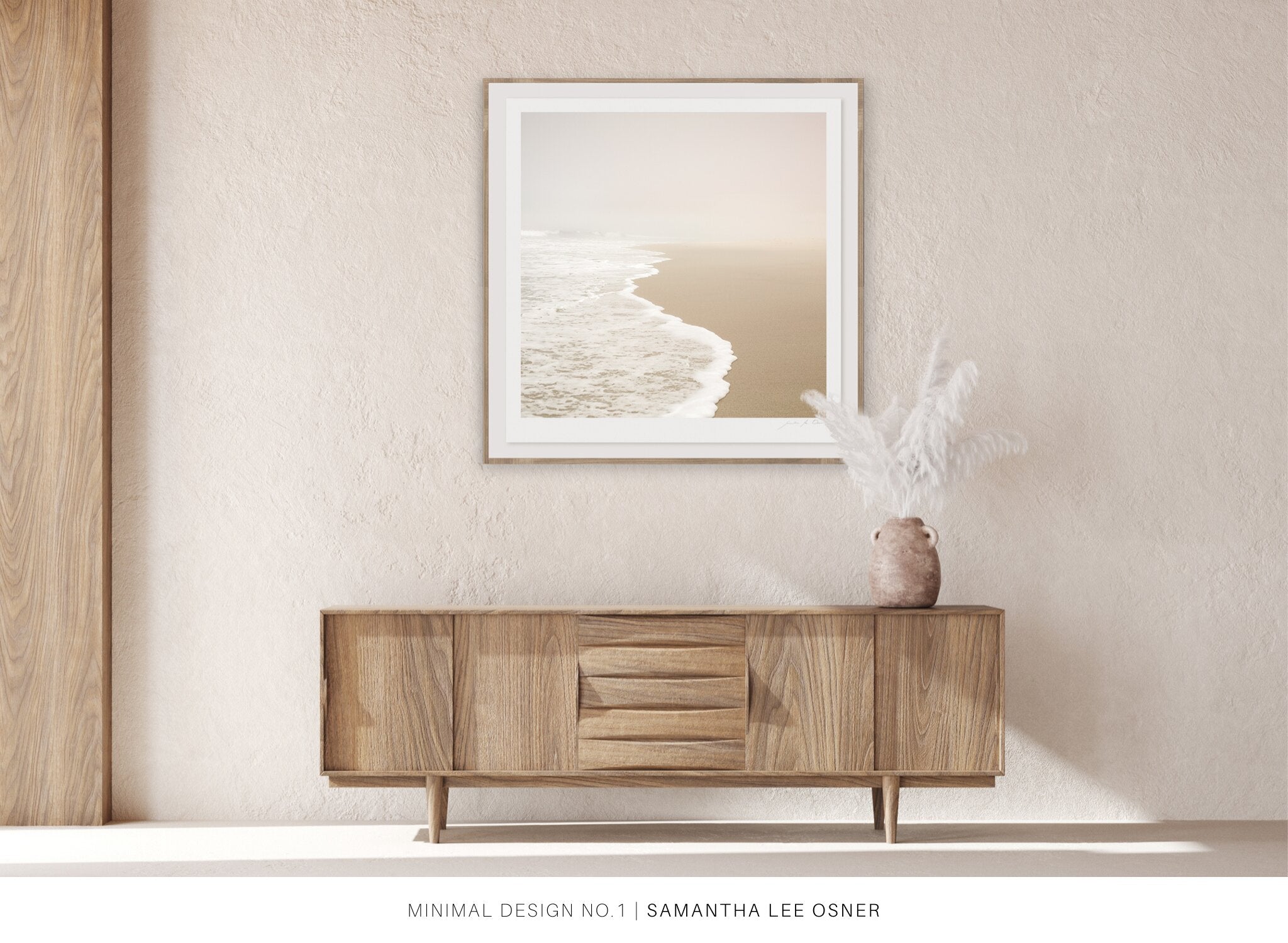While discussing print selections with an interior designer, he said, "Never forget Martin, great design lies down quietly and behaves itself". In complete contradiction, he then went on to say, "if it doesn't clash, it doesn't really match". I certainly agree with the wisdom in his first statement; however, I am still trying to get my head around the second.
So this begs the question, why is it that most people, when selecting wall art, choose simplistic over complex imaging?
Allow me to share my thoughts as I throw my ten cents worth into the debate. My first point is that we, as humans, are continually bombarded by visual information as we navigate our way through day-to-day life, amplified by modern-day phones, computers, television, cinema, theatre, and so on. To cope with this visual overload, we can choose what we wish to look at and ignore what we don't.
The human visual system is amazing and can best be described as "selected peripheral vision" combined with excellent quick auto-focus ability. Let me explain; subconsciously, we can perceive and understand the entire scene we are looking at. Yet, we can only concentrate "focus" on one element at a time—as all visual information surrounding the point we are focusing on tapers off to a gradual blur. With our eyes linked to the brain, I believe that this system allows up to cope with the mass of visual stimuli we experience all the time. We remain aware of everything within our peripheral vision but can only focus on a single element at a time. It's funny that the speed at which we focus is so quick that we are led to believe that we can see all things in focus at once, but we cannot.
This phoneme goes for everything we see, from the most distant scene to close up inspection. I like to explain it this way to my students. When funds are tight, we can choose to look at a specific transaction on our bank statement without seeing the balance, even though these two columns are right next to one another.
My second point is that mankind is rather lazy when confronted with mass visual stimulation, in this case, art. Unless very interested, we would rather choose to ignore than have to concentrate on too many elements. I think it's again because we are continually confronted with so much visual information that we choose not to look at everything simply as a coping mechanism.
Isn't it funny, on the other side of the coin, when it comes to taking photographs or creating art, many artists would agree that there is exceptional power in simplicity, especially so with photography where the lens records a lot of visual stimuli. Here, it is as important to decide on which elements are to be left out of a composition as to which will be included, a statement that defies logic, I know. One would think that including more elements would create more interest, but it doesn't work like this. It's by removing unnecessary components in composition that the artist can achieve mystery and curiosity. Success in art is often achieved by introducing the topic and then allowing the viewer to complete the story using their own imagination.
For a moment, let's turn our focus towards artwork for display in interior design. I have found that prints are most effective when placed as a focal point that compliments the design itself. Simplicity again is most often the key. When artworks are displayed too close to one another, or the artwork itself is very busy, it will usually not hold the viewer's attention for the same reasons as discussed earlier. A larger piece that is given space to breathe and artwork with simple composition will generally feel airy and light, attracting more attention. Less is undoubtedly more.
It has been said that if one leaves room for misunderstanding, the chances are that you will be misunderstood. So let me make my point as clear as possible. What I am not saying is that simplicity is the only option to consider in wall art. There are many genres and styles to consider, and everyone has different preferences. For example, documentary imagery can encapsulate interesting stories and revisit moments in time.
On the other hand, landscape photography can evoke emotion and stimulate memories of places once visited or of interest. Portraits can remind us of people we know, feature character and portray cultural influence. Still, life images showcase recognisable items and iconic design and abstract art that will undoubtedly challenge the imagination in more ways than one.
I have worked with many different clients, designers, and architects to know that no one recipe will suit all. There are many ways to create impact and enjoy art, but it's a big but, simplicity will always stand the test of time and can be utilised in all genres and art medium.
According to Leonardo da Vinci who said: "simplicity is the ultimate sophistication". Besides just art, simplicity in life is the true genius of all.
Best Wishes,
VIEW ALL THE PRINTS IN OUR MINIMAL ART COLLECTION >>
Featured Print | Serenity No.3 by Samantha Lee Osner













